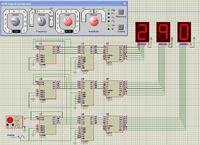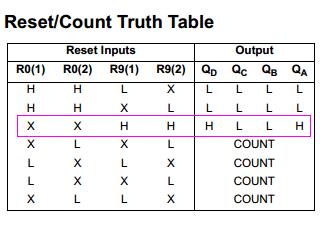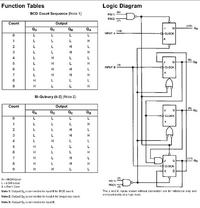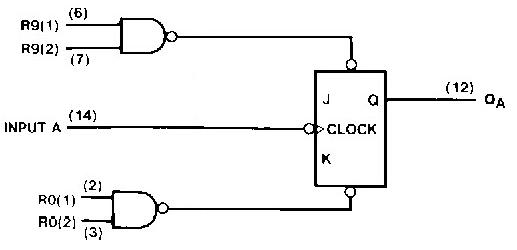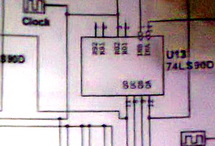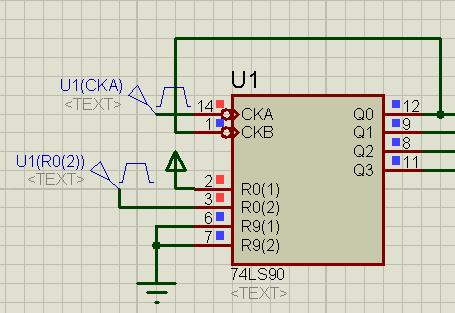
- Joined
- Apr 1, 2011
- Messages
- 15,577
- Helped
- 2,912
- Reputation
- 5,836
- Reaction score
- 3,048
- Trophy points
- 1,393
- Location
- Minneapolis, Minnesota, USA
- Activity points
- 116,665
Now, first three are fine and same outputs as shown in the Truth table. But when I want to get count on the output then LEDs are all low for last four states.
see here what I did on the multisim
View attachment 89485
To get a count at the led's:
Pins 2,3,6,7,10 must go to ground.
Pulses go to pin 14.
Connect pin 1 & 12 (bit A out).
- - - Updated - - -
Now, first three are fine and same outputs as shown in the Truth table. But when I want to get count on the output then LEDs are all low for last four states.
see here what I did on the multisim
View attachment 89485
To get a count at the led's:
Pins 2,3,6,7,10 must go to ground.
Pulses go to pin 14.
Connect pin 1 & 12 (bit A out).


